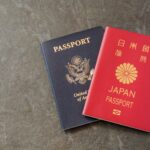How old is Japan?

How old is Japan?
When was Japan founded?
Japan seems to have a very long history. However, questions may arise as to when Japan was founded or how old Japan is as a country. The Japanese Archipelago has been inhabited since around 30,000 BC. This may explain how old Japan is in some sense, but is there a particular date or year when Japan was founded? The answer to the question of how old Japan is or when Japan was founded is not simple, as the history of Japan as a nation can go back over 2,000 years or even 2,600 years, to the era of mythology.
National Foundation Day
February 11 is a national holiday in Japan, called National Foundation Day. However, it may not be proper to consider this as a credible date when Japan was founded as a nation. According to the two oldest historical books in Japan, the first Emperor of Japan, Emperor Jinmu, descended from heaven and acceded to the throne on February 11, 660 BC. The Japanese government decided to select this date as National Foundation Day because there were no other historical sources regarding the foundation of the nation. National Foundation Day was added to the roster of national holidays in 1966. There was opposition from the opposing parties and also from many scholars who stressed the point that the story of the first emperor who descended from heaven and was assigned to accede the throne to govern the nation is not a historical fact but, rather, simply a myth.
Two historical books are “Kojiki” and “Nihonshoki”. Both are historical books officially compiled by the Japanese Imperial Government and were completed in the 7th century. The descriptions that the Emperors were decedents of the God in written historical books were said to be used for convincing to the public of the legitimacy of the emperor’s governing the country.
Although Emperor Jinmu is thought to be a fictional character, in Kashihara City there is a shrine to the first emperor.
Besides the two historical books, which both appeared to be collections of myths, there were mentions of the country of Japan in the historical books of China.
Ancient Queendom of Yamayataikoku
y the second century, there were multiple small states in the present region of Japan, and Japan was in a state of war. According to Chinese history books written back then, there was a queendom called “Yamataikoku” in Japan. The oldest reference to Yamataikoku is in the Chinese history book of dynastic Twenty-Four Histories. Yamataikoku already existed in the third century, presiding over other states and a shaman, Himiko was the queen of the state. The days of war ended during her reign. The location of this queendom has always been a matter of debate. Some scholars support theories that it was in Kansai Region (Kyoto-Nara area), while others support the theory that it was in North Kyushu (Fukuoka). Apart from the myth of Emperor Jinmu, the Queendom of Yamataikoku was the first government established in Japan.
Did Emperors in early eras really exist?
Although emperors certainly existed from around the sixth century, because the contents of history books are mythological and their legitimacy is highly questionable, it is still unknown which emperors actually existed.
Foundation of the state of Japan from other points of view
Japan joined World War 2, and before it surrendered to the US and the Allies, it was called the Empire of Japan and there was no democracy. If the beginning of today’s Japan is when democracy was brought to the country, in some sense it may be correct to say that today’s Japan was founded when it surrendered to the US and the Allied Forces at the end of World Word 2 and was born again as a democratic nation.
About Imperial Era
In prewar Japan, the system of counting years from the year when Emperor Jinmu acceded to the throne was used. Some people may ask questions like “How old is Japan in 2022?” If you count years using this imperial era system, this year (2022 on the Western calendar) would be 2681 in Japan. This counting system is no longer used, though it was quite common in the prewar days.












